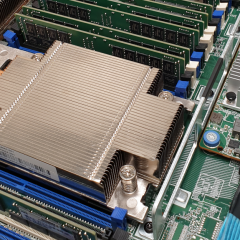Insufficient access rights Error Code 8344
Error Code 8344 KB ID 0001636 Problem With Azure AD Replication, you may notice that you have the following error when you take a look at your connector status; Error: permission-issue Connected data source error code: 8344 Connected data source error: Insufficient access rights to perform this operation. Solution: Error Code 8344 Firstly ensure that the user you are running AAD sync under, has the following permissions on the...
AAD Contains Another Object With The Same DN
KB ID 0001638 Problem I’ve seen this a few times now, I’ve had users that will not sync from Active Directory to Azure Active Directory (Office 365). When you look to see why, you will see something like; The Connector {Your-Domain}.onmicrosoft.com – AAD contains another object with the same DN which is already connected to the MV. Note: For the uninitiated, DN is Distinguished Name, and MV is MetaVerse. If you...
There is Currently No Route to the Mailbox Database
KB ID 0001413 Problem Background: Just introduced Exchange 2016 into Exchange 2013 Environment. Mailboxes on Exchange 2016, can send external mail and internal (to Exchange 2013) mail. No mail flows from Exchange 2013 to Exchange 2016. External mail to Exchange 2016, (which flows thought the 2013 server,) also fails. Event ID 5006 Cannot find information about owning Mailbox Server {server-path} for database {database-path} in routing...
Event ID 8213
KB ID 0000144 Problem Event ID 8213 System Attendant Service failed to create session for virtual machine <servername>. The error number is 0xc007052e. Admin password on the Administrative group (In Exchange) needs changing to the correct domain admin password. NOTE only happens if you have an Active Directory Connector installed. Solution 1. Start > All Programs > Microsoft Exchange > Exchange System Manager. 2....
SBS – No Incoming Mail ‘421 4.3.2 Service not available’
KB ID 0000803 Problem While testing mail flow on a new SBS 2011 Server, outbound mail worked fine, but no mail would flow in. When I attempted to Telnet in from a remote host this was what I saw; 421 4.3.2 Service not available Connection to host lost. Solution Normally I’d expect to see an error like this if the Exchange ‘Receive Connector’ was misconfigured, (if you’re not using SBS 2011 create a new default...





